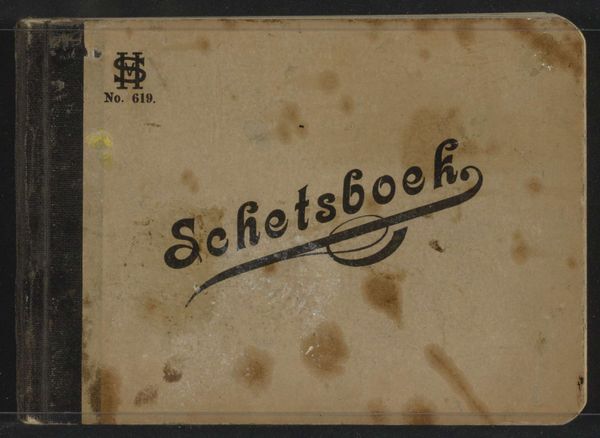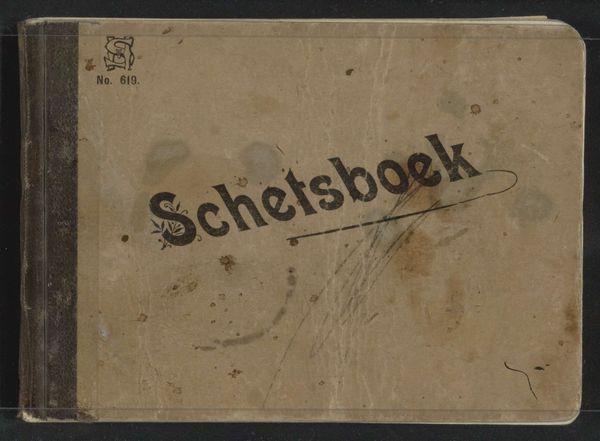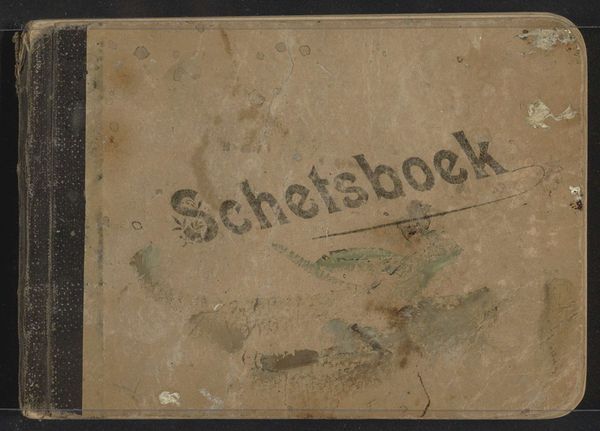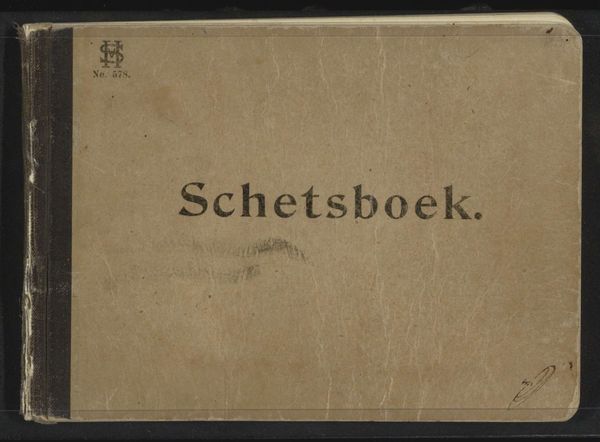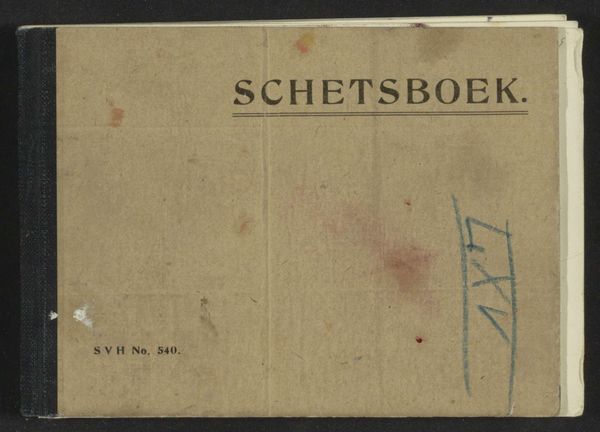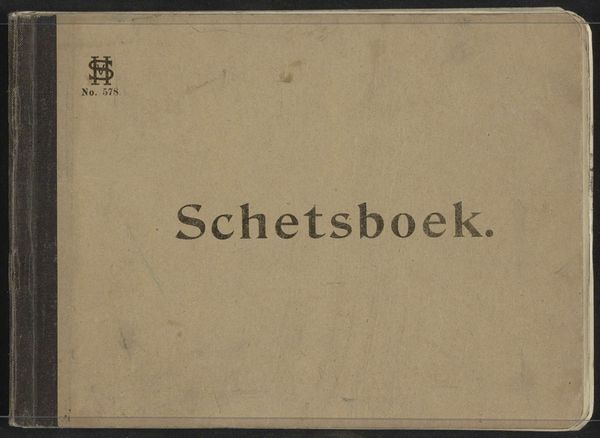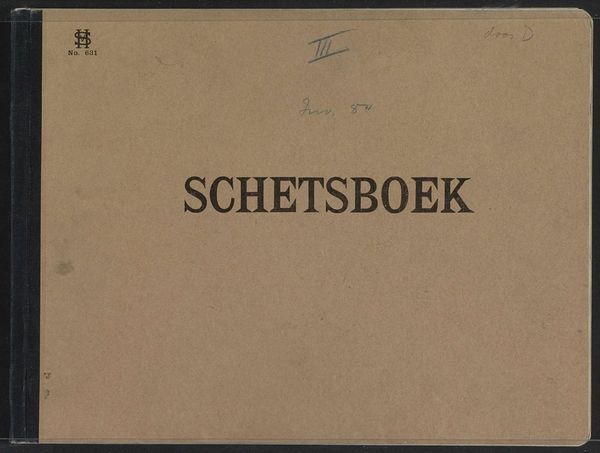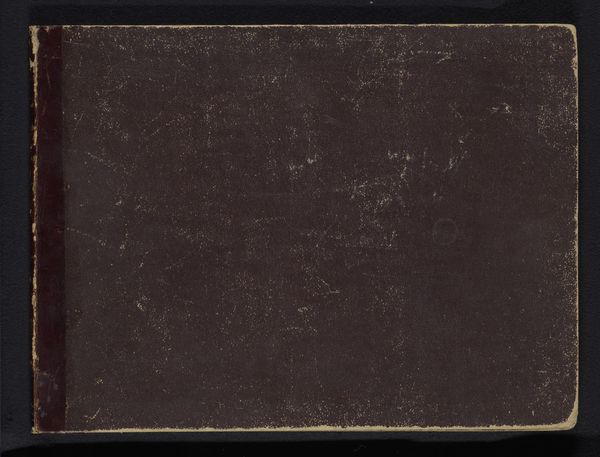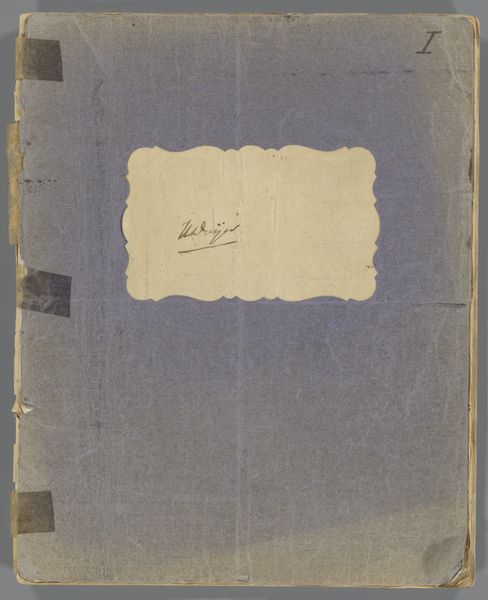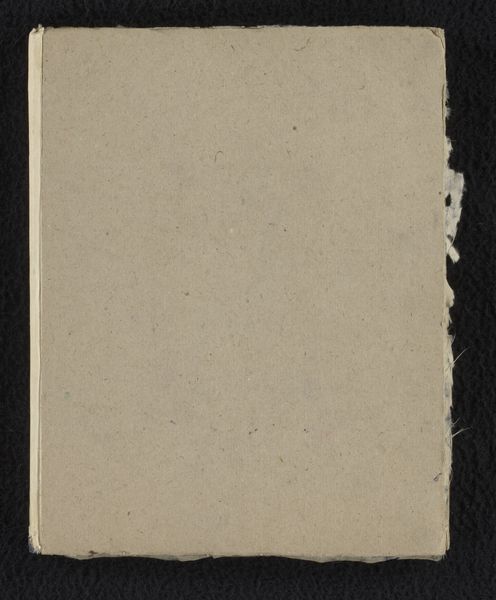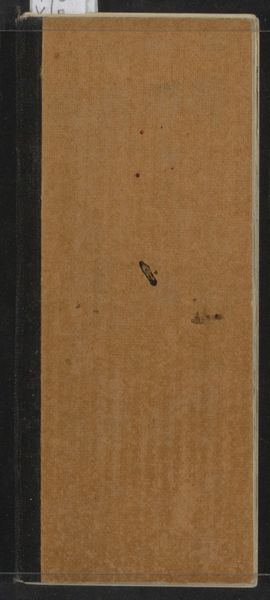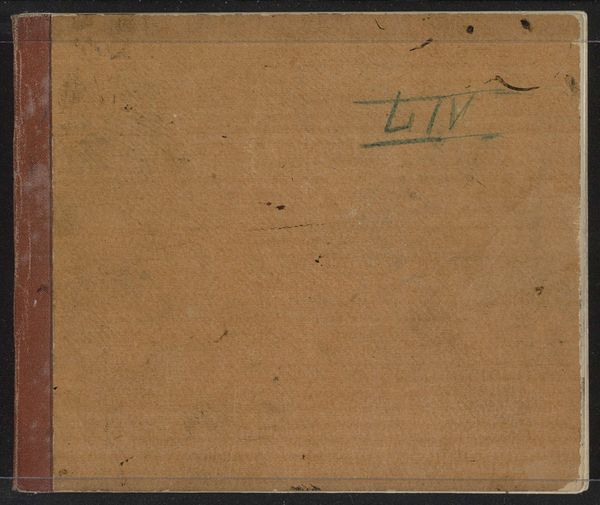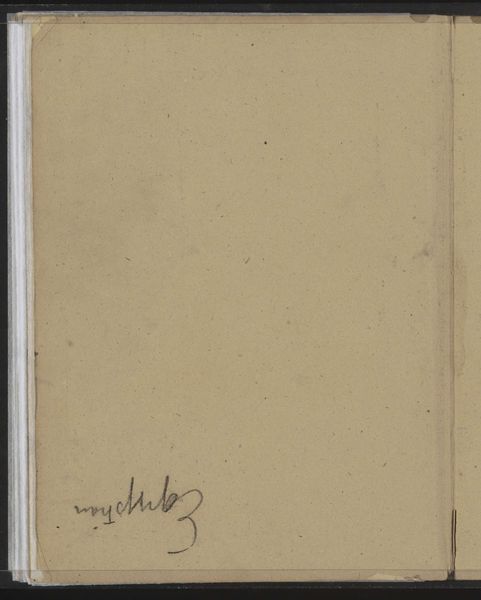
Dimensions: height 114 mm, width 159 mm, thickness 10 mm, width 307 mm
Copyright: Rijks Museum: Open Domain
Curator: This is a fascinating sketchbook containing 41 leaves by Willem Cornelis Rip, dating from 1907. It incorporates a variety of media, including drawing, collage, print, and even photography on paper. Editor: My initial thought? It looks so unassuming. It possesses this quiet, personal feel. Just the simple text “Schetsboek”—Dutch for sketchbook—and a thin line beneath it. The cover is aged and marked, hinting at untold stories within. Curator: Precisely. Consider Rip's positioning within the artistic landscape of the early 20th century. Impressionism was giving way to modernism; ideas were circulating widely about new ways of seeing. This sketchbook gives us privileged insight into the development of his artistic practice. Editor: It almost feels subversive in its ordinariness. Many artists aim for grandeur and permanence. But there is something intimate in viewing pages surely filled with preparatory studies. Perhaps even ideas abandoned mid-way, which I think creates space for intersectional dialogue in art and identity. Curator: Definitely. It reveals the artist's hand in a uniquely unmediated way. Given the mix of media identified – drawings with photography – it demonstrates an artist absorbing, experimenting, and synthesizing visual inputs from different sources, it really exemplifies how art movements reflect changing society! Editor: Do we know anything about the sociopolitical context of this period in the Netherlands that might be reflected here? Curator: Absolutely. This was a period of growing social and political consciousness, particularly regarding class divisions and the role of the artist in society. While not overtly political, a work like this reflects an attention to the everyday and perhaps a quiet rejection of grand narratives, aligning with broader social undercurrents. Editor: This exploration into what informs our sense of seeing provides not just an artistic encounter but a conversation with history. Thank you. Curator: My pleasure, it is always valuable to view art through various social, cultural, and political dimensions.
Comments
No comments
Be the first to comment and join the conversation on the ultimate creative platform.
